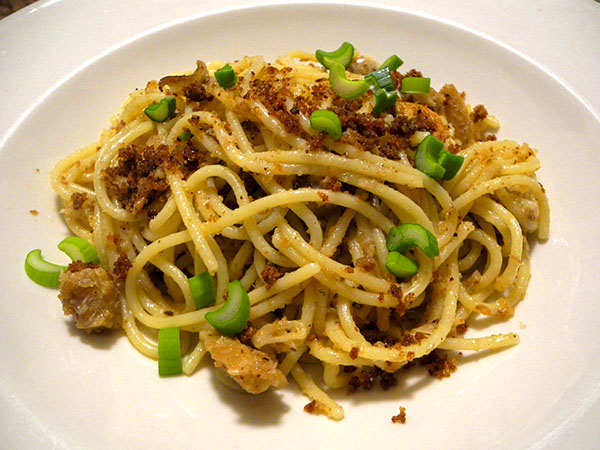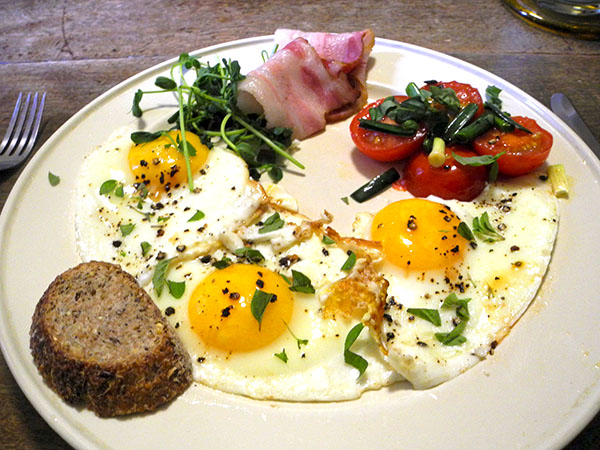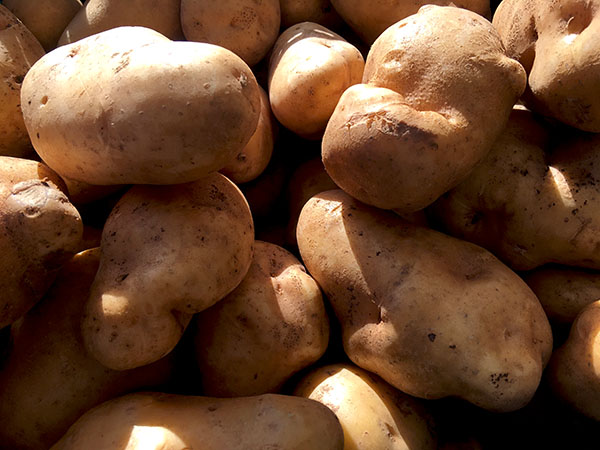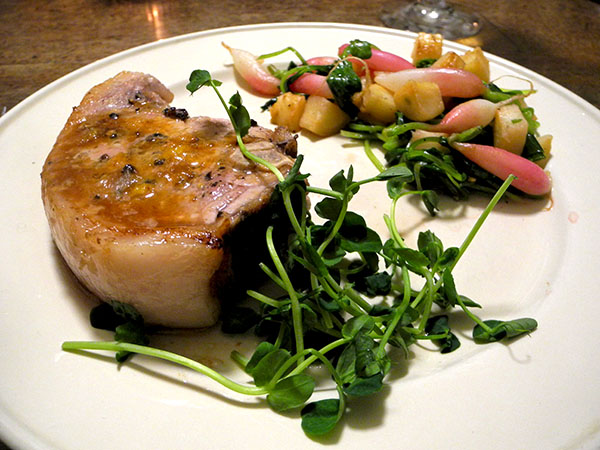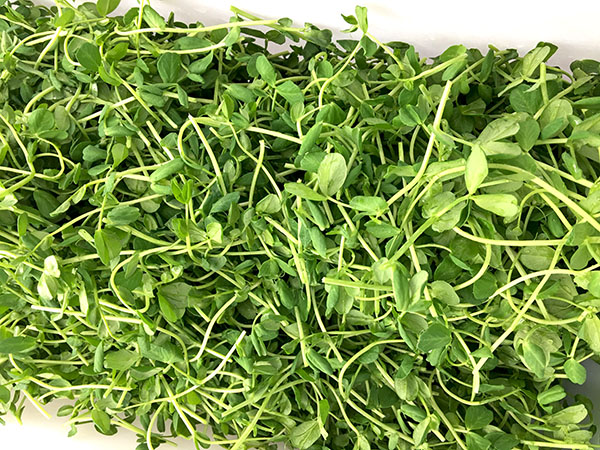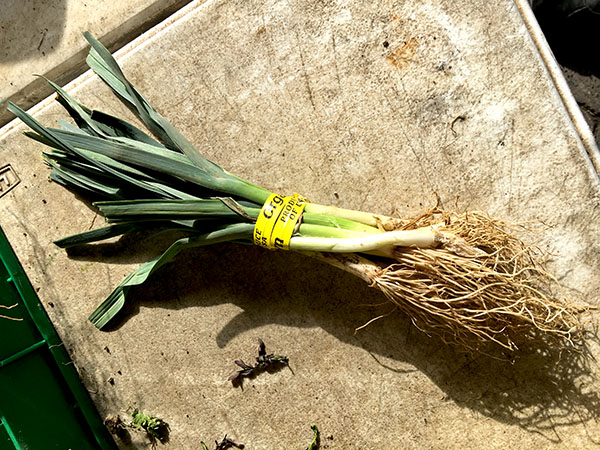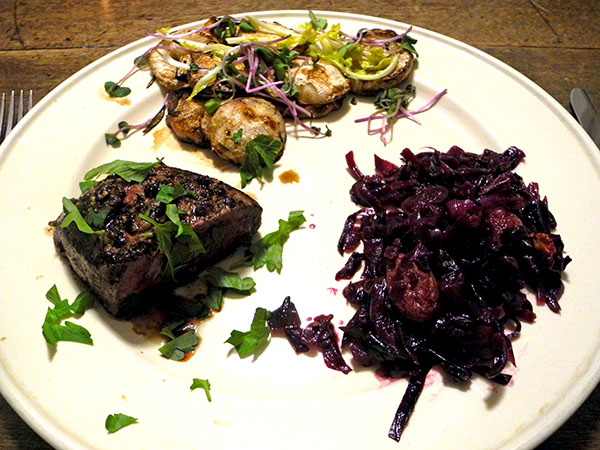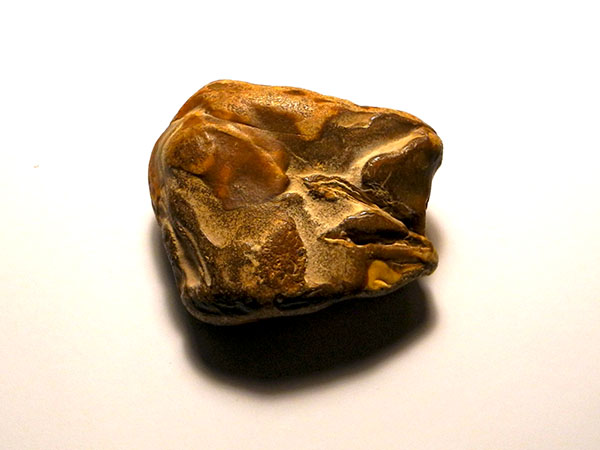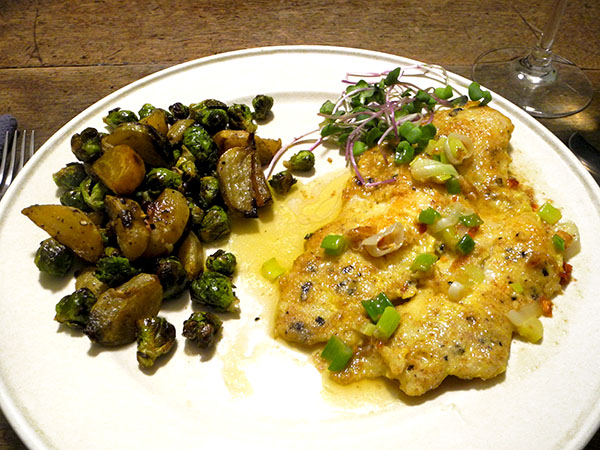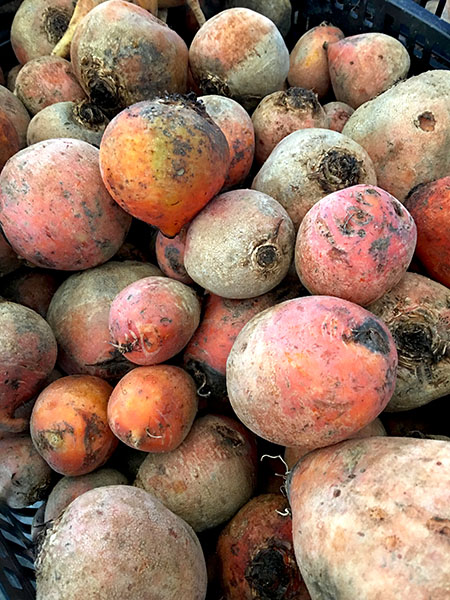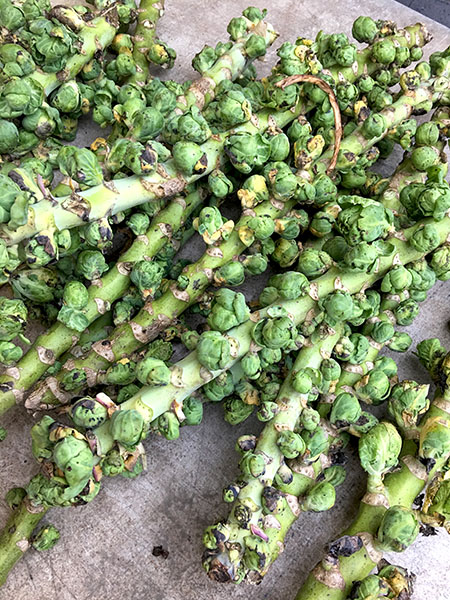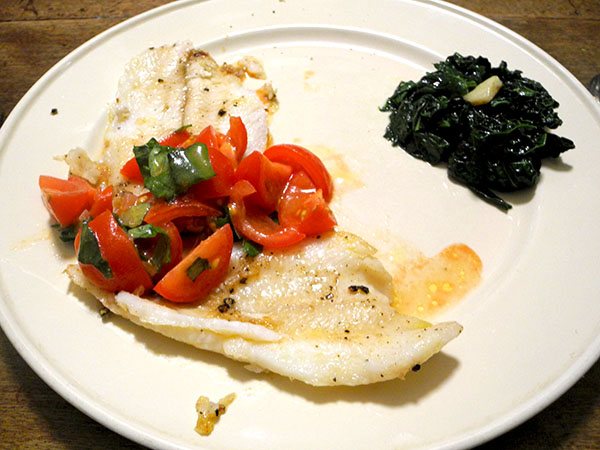
The gray sole, whose name is almost always spelled elsewhere in the English-speaking world, ‘grey sole’, is a beautiful fish, delicate and mild in flavor. “It’s barely even fish” is a description I just came across on a site advising people new to cooking or eating fish. It also had a very gentle, I’ll even say ‘perfect’, texture (something to which even the finest Schnitzel could never aspire).
I forgot to add that it’s delicious. It doesn’t taste like chicken, but, like chicken, it may seem to be asking to be loaded down with additional flavor ingredients. I’m usually careful to avoid the temptation.
I try not to disguise any of the virtues I’ve described above, and last night I introduced almost nothing between the fish, simply seasoned and fried in butter and olive oil, and our taste buds, making sure that in the placement of the ‘tomato butter’, so perfect a compliment, it would remain just that, and would not smother the fillets, physically or tastewise.
I had picked up barely two-thirds of a pound of fish that morning, but I wasn’t worried that the entrée would be too small for us: I wanted to be sure we would be interested in a second course, one which would include a new local cheese I had been looking forward to checking out.
On the other hand, the little bit of Tuscan kale (aka cavalo nero, lacinato, or black kale) with which I had decided to accompany the sole seemed to grow smaller and smaller as the cooking process advanced; I ended up slicing some excellent hearty bread, with the excuse that something would be needed to soak up the juices.
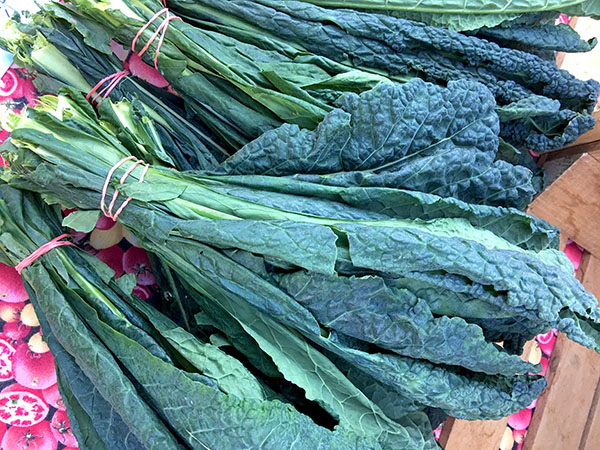
- Four small Gray sole fillets, roughly 2-and-a-half-ounces each, from P.E. & D.D. Seafood, cooked in a heavy tin-lined copper pan over medium-to-high heat for little more than a minute, turning, and cooking for another minute, or until done, placed on warm plates, some ‘tomato butter’ arranged on each plate between the fillets [the butter had been composed a few minutes earlier by melting some ‘Kerrygold Pure Irish Butter‘, then adding half of one small shallot from Norwich Meadows Farm, finely diced, cooking the onion until softened and fragrant, removing the shallot butter from the heat, allowing it to cool for 2 or 3 minutes, then tossing it with 5 Backyard Farms Maine ‘cocktail tomatoes’ from Whole Foods, each cut into 6 wedges (the tomatoes, minutes before, tossed with almost a teaspoon of torn Gotham Greens Rooftop packaged basil from Whole Foods), stirred gently, seasoned with salt, with a few drops of red wine (Chianti) vinegar stirred into the mix at the end]
- one small bunch of cavalo nero from Eckerton Hill Farm, wilted briefly in olive oil in which one clove or garlic from Tamarack Hollow Farm had first been heated, seasoned with salt and pepper, drizzled with a little more oil
The course that followed included more of the same bread, which turned out to be a great foil for a fantastic cheese, and also a perfect spreading platform.
The picture immediately below is of an 18-ounce small wheel (I took home about half of it).

This is a glimpse of the cut side, on the counter at home, a section of cheese already having been removed and served.
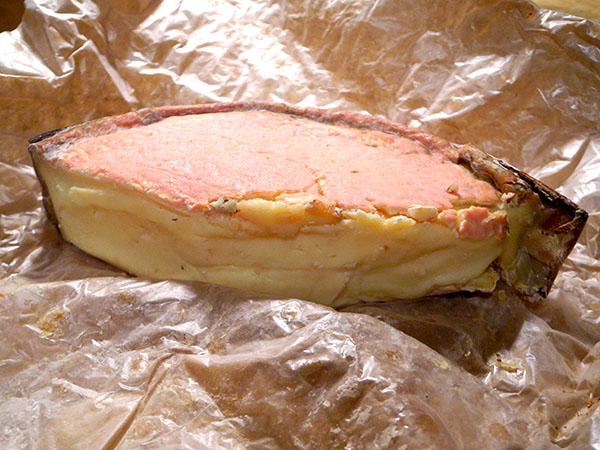
- wedges of Consider Bardwell Farm‘s very exciting new, “bloomy rind pasteurized cow cheese wrapped in spruce bark and aged in Brooklyn”, Peter’s description of Peter, while he was giving me a taste (the cheese has not yet been named), served with slices of ‘8 Grain 3 Seed’ bread from Rock Hill Bakery
- the wine throughout was a French (Burgundy) white, Domaine Dupré Chardonnay Bourgogne 2014, from Chelsea Wine Vault
- the music was Antonio Vivaldi, ‘Six Concertos for the Emperor’ [Charles VI], performed by Andrew Manze and the English Concert
